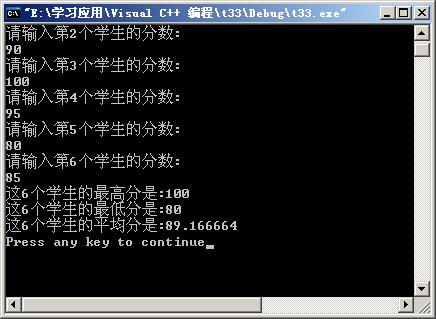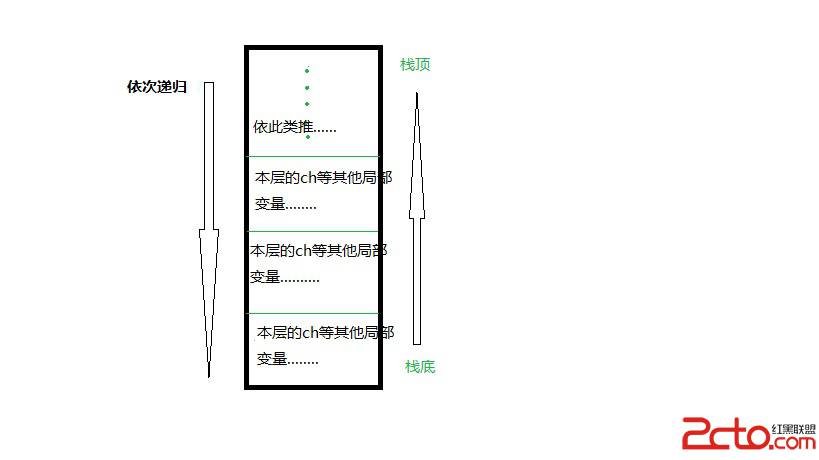C++中宏的使用技巧
直接上代码,这次归纳了6点
[cpp]
// Maro.cpp : 定义控制台应用程序的入口点。
//
#include "stdafx.h"
#include <Windows.h>
#include <iostream>
#include <string>
using namespace std;
// 宏的用法
// 1.因为宏是在编译时进行简单的替换,所以很多时候使用宏在突出
// 重点参数的同时,也会提高效率。
#define MAXHEIGHT 100.0
// 不过自定义单位一般使用typedef
typedef int SYSINT;
// 2.短小实用的语句
#define SAFE_DELETE(p) {if(p) delete p; p = NULL;}
#define SAFE_RELEASE(p) {while(p->Release()>0); p = NULL;}
// 3.类的导出的声明,因为编译时会报错,所以先全部注释掉
//#ifdef MODULE_EXPORTS
//# define MODULE_API __declspec(dllexport)
//#else
//# define MODULE_API __declspec(dllimport)
//# ifdef _DEBUG
//# pragma comment(lib, "Moduled.lib")
//# else
//# pragma comment(lib, "Module.lib")
//# endif
//#endif
// 4.一些编译时的条件语句
#ifndef _WIN32_WINNT // 指定要求的最低平台是 Windows Vista。
#define _WIN32_WINNT 0x0600 // 将此值更改为相应的值,以适用于 Windows 的其他版本。
#endif
// 5.实用的小函数
// 例如计算某函数的运行时间
#define BEGIN_TIME \
UINT start = GetTickCount();
#define END_TIME(total) \
total = GetTickCount() - start;\
//当然也可以
#define USE_TIME(used, fuc) \
UINT begin1 = GetTickCount();\
fuc;\
used = GetTickCount() - begin1;\
// 6.定义基类,派生类的接口,这样可以减少修改量,突出接口 ##表示连接
#define INTERFACE_Creature(terminal) \
public: \
virtual void SetName(const string& strName) ##terminal\
virtual bool GetName(string &strName) ##terminal
#define BASE_Createture INTERFACE_Creature(=0;)
#define Divd_Createture INTERFACE_Creature(;)
class BaseClass
{
BASE_Createture;
};
class DivdClass : public BaseClass
{
Divd_Createture;
};
bool DivdClass::GetName(string& strName)
{
return true;
}
void DivdClass::SetName(const string& strName)
{
}
void Dosth(int time = 500)
{
Sleep(time);
}
int _tmain(int argc, _TCHAR* argv[])
{
//1
double dLength = 50.0;
if (dLength > MAXHEIGHT)
{
// do sth
}
//2
double *p = new double[100];
SAFE_DELETE(p);
//3
//略
//4
#ifdef DOSTH
//DO STH
#endif
//5
int useTime;
//我们可以这样
BEGIN_TIME
Dosth();
END_TIME(useTime);
//还可以这样
USE_TIME(useTime, Dosth())
printf("Used time is %d\n", useTime);
//6
BaseClass *pD = new DivdClass;
pD->SetName("test");
SAFE_DELETE(pD); // 学而时习之,不亦说乎
return 0;
}
// Maro.cpp : 定义控制台应用程序的入口点。
//
#include "stdafx.h"
#include <Windows.h>
#include <iostream>
#include <string>
using namespace std;
// 宏的用法
// 1.因为宏是在编译时进行简单的替换,所以很多时候使用宏在突出
// 重点参数的同时,也会提高效率。
#define MAXHEIGHT 100.0
// 不过自定义单位一般使用typedef
typedef int SYSINT;
// 2.短小实用的语句
#define SAFE_DELETE(p) {if(p) delete p; p = NULL;}
#define SAFE_RELEASE(p) {while(p->Release()>0); p = NULL;}
// 3.类的导出的声明,因为编译时会报错,所以先全部注释掉
//#ifdef MODULE_EXPORTS
//# define MODULE_API __declspec(dllexport)
//#else
//# define MODULE_API __declspec(dllimport)
//# ifdef _DEBUG
//# pragma comment(lib, "Moduled.lib")
//# else
//# pragma comment(lib, "Module.lib")
//# endif
//#endif
// 4.一些编译时的条件语句
#ifndef _WIN32_WINNT // 指定要求的最低平台是 Windows Vista。
#define _WIN32_WINNT 0x0600 // 将此值更改为相应的值,以适用于 Windows 的其他版本。
#endif
// 5.实用的小函数
// 例如计算某函数的运行时间
#define BEGIN_TIME \
UINT start = GetTickCount();
#define END_TIME(total) \
total = GetTickCount() - start;\
//当然也可以
#define USE_TIME(used, fuc) \
UINT begin1 = GetTickCount();\
fuc;\
used = GetTickCount() - begin1;\
// 6.定义基类,派生类的接口,这样可以减少修改量,突出接口 ##表示连接
#define INTERFACE_Creature(terminal) \
public: \
virtual void SetName(const string& strName) ##terminal\
virtual bool GetName(string &strName) ##terminal
#define BASE_Createture INTERFACE_Creature(=0;)
#define Divd_Createture INTERFACE_Creature(;)
class BaseClass
{
BASE_Createture;
};
class DivdClass : public BaseClass
{
Divd_Createture;
};
bool DivdClass::G
补充:软件开发 , C++ ,




